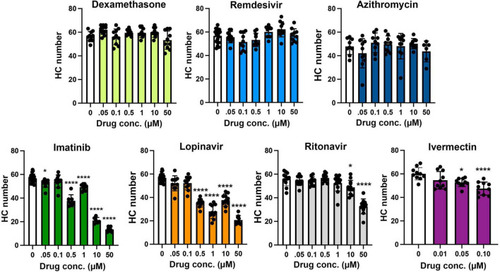FIGURE 2
- ID
- ZDB-FIG-220914-2
- Publication
- Coffin et al., 2022 - Putative COVID-19 therapies imatinib, lopinavir, ritonavir, and ivermectin cause hair cell damage: A targeted screen in the zebrafish lateral line
- Other Figures
- All Figure Page
- Back to All Figure Page
|
Hair cell quantification following treatment with COVID-19 therapies. Hair cells were counted from images represented in |

